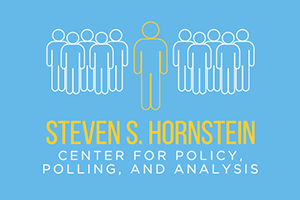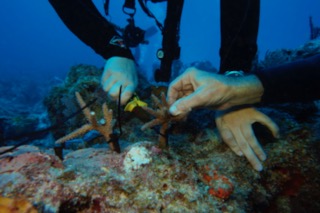Josh LaMore, who graduated from LIU Brooklyn Honors College as the class valedictorian in May 2014, has turned his experience in Utah’s rocky wonderlands into a breathtaking new book called “Beauty Beyond Telling: The Story of Cedar Breaks National Monument.”
Established as a protected area by President Franklin D. Roosevelt in 1933, Cedar Breaks resembles a giant coliseum stretching three miles across, full of colorful stone spires, arches and pinnacles, known as hoodoos. From an elevation of 10,000 feet, it drops 2,000 feet to the canyon floor. The first nation peoples of the area call it the “Circle of Painted Cliffs.”
Commissioned and published by the Zion National Park Forever Project, the book project is a result of LaMore’s work as the National Collegiate Honors Council’s first Partners in the Parks Fellow.
LaMore credits LIU Professor Joan Digby, director of the LIU Post Honors College, and Southern Utah University for instigating the Partners and coordinating his fellowship.
Born in Illinois, LaMore said he’d never spent any time in a national park until the summer of his junior year when he and another LIU classmate joined a group of students at Sequoia National Park. They hiked deep into the Sierra Mountains and spent a week in the remote wilderness working on a project for the Park Service to reintroduce native plant species to their former habitats.
That fall he returned to Brooklyn to begin his senior year but the seed had been planted in his mind that he must get back to nature.
“It was incredible,” LaMore said. “It was like I had found a large part of myself that I didn’t know!”
Once he learned that the National Collegiate Honors Council had come up with enough funding for a fellowship, he knew he had to apply. He got the position.
“So, right after I finished my valedictorian speech, the next day I’m on a plane to Utah and living 20 miles from town,” he recalled.
His role at Cedar Breaks was to be an interpretative Park Ranger intern for the summer of 2014, giving 15-20 minute talks to visitors on the unique history of Cedar Breaks—and how it came to be.
The challenge was explaining half a billion years’ worth of geological transformation without using the word “millions” since he encountered some listeners who apparently believed that “the Earth is only 5,000 or 7,000 years old,” LaMore exclaimed. Complicating that notion is that records of human habitation in the area date back 10,000 years at least. “I had to be very sensitive with what I said,” LaMore added.
During his fellowship, he saw the need for a new book about Cedar Breaks because the visitor center had a publication less than a dozen pages long which completely ignored the compelling cultural history of the area and cited incorrect and outdated geology.
“We’re at the edge of the Colorado Plateau and the Great Basin region,” LaMore said. “When you stand at the edge overlooking the beautiful amphitheater and all the rock formations below, that’s actually the cut-off between them.”
With encouragement from the park superintendent and the chief of interpretation and education, LaMore came up with a book proposal. Once his project was approved, LaMore got to work. What surprised him was discovering the competing narratives recounting the centuries of human interaction with the region, from the Paiutes to the early Spanish explorers, the Mormon settlers and the federal government.
“I teetered back and forth with all the different perspectives,” LaMore said. He’s immensely pleased with the final result. “I’m very happy with it.”
Currently, LaMore is a graduate student at Pratt Institute working on his master’s in library information science, which he hopes to receive this December. He’s also been a Museum of Modern Art library fellow and a freelance book editor and researcher. LaMore received an Academy of American Poets Award and was recognized in Z Publishing’s “New York’s Best Emerging Poets.” This fall he hopes to release a fully illustrated book of lyrical prose he calls, “Breaklands,” which draws upon his Utah journals.
“I never expected to be involved in writing!” said LaMore, who had toured with an alt-rock-punk band he started when he was 16. “I had an English teacher laugh at me when I expressed how much I hated English in high school. She told me that I would end up studying English later in life!”
These days it’s safe to say that the prescience of all LaMore’s teachers—especially the faculty who inspired him at LIU—has been richly rewarded.



